Are you tired of dealing with vendor services that just don't meet your expectations? It's time to take action and communicate your needs effectively! In this article, we'll explore how to craft a compelling request for improvements that not only conveys your concerns but also encourages a productive dialogue. Keep reading to discover tips and a sample letter that will help you get the results you want!
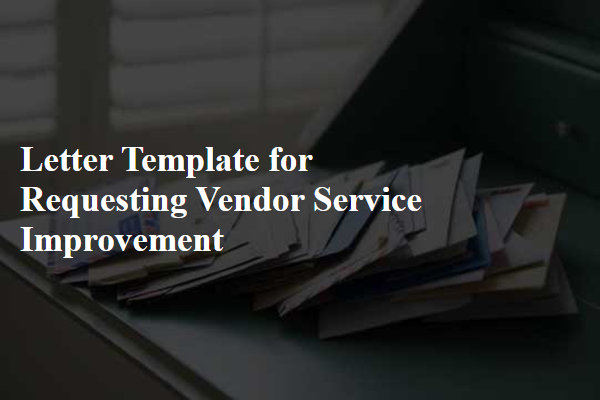
Clear Subject Line
Effective communication regarding service enhancements can lead to a more productive vendor relationship. A clear subject line ensures immediate understanding of the request and prioritizes attention. Consider using phrases like "Request for Vendor Service Improvement" or "Enhancement Proposal for Vendor Services" to succinctly convey the purpose. Include relevant details such as specific service issues experienced, the date range of occurrences, and any affected products or services. Clarifying expectations for improvement metrics, timelines, or communication methods strengthens the request. Furthermore, mention previous successful collaborations to provide context and foster a collaborative atmosphere for future enhancements.
Specific Service Issues
Vendor service improvement requests often arise from specific service issues that impact overall customer satisfaction. For instance, delivery delays can disrupt operational workflows, especially in industries like retail, where timely inventory replenishment is crucial. Additionally, inadequate customer support response times, often exceeding 48 hours, can lead to unresolved issues and frustrated clients, particularly in sectors relying on real-time assistance, such as technology services. Quality of products also plays a vital role; consistent defects, averaging a 10% return rate, can undermine trust and drive customers to competitors. Collectively, these factors emphasize the need for vendors to address these service shortcomings in order to enhance overall performance and maintain competitive advantage.
Desired Outcomes
Requesting vendor service improvement focuses on enhancing operational efficiency and customer satisfaction. Desired outcomes include reduced response times for service requests, aiming for a maximum of 24 hours for urgent issues to ensure continuity of business operations. Improved communication channels, such as regular updates on service progress via email or dedicated platforms, are essential for transparency. Increased reliability of services is also critical, with a target uptime of 99.9% in order to minimize disruptions to various departments. Additionally, comprehensive training sessions for staff can foster a better understanding of vendor services, leading to optimized usage and fewer issues. Ultimately, these improvements will contribute to a stronger partnership and higher overall service quality.
Response Deadline
Service improvement requests typically require a comprehensive approach to enhance vendor relationships. Scheduling a response deadline is essential for establishing accountability and ensuring timely resolutions. Specify a reasonable time frame, such as 7 to 14 calendar days, allowing the vendor ample opportunity to assess and respond. Emphasize the need for improvements in areas like delivery times, product quality, or customer service based on prior performance metrics. Clear expectations in communication can foster collaborative efforts toward achieving mutual goals and enhancing overall service quality.
Contact Information
In the realm of vendor service improvement, organizations often seek to enhance their partnerships with service providers to ensure optimal performance and satisfaction. Key elements include clearly stating the organization's name, address, and primary contact number (typically a 10-digit format). Companies might incorporate specific dates (such as the service review timeline) and reference previous service agreements or reports (like the annual performance evaluation from 2022). Additionally, noting relevant performance metrics (e.g., response times under 24 hours or service accuracy rates exceeding 90%) allows for a precise context for improvement. The incorporation of feedback mechanisms (such as customer satisfaction surveys) and specific areas of concern (e.g., delivery delays affecting supply chain efficiency) demonstrates a proactive approach toward enhancing vendor collaboration and service delivery.

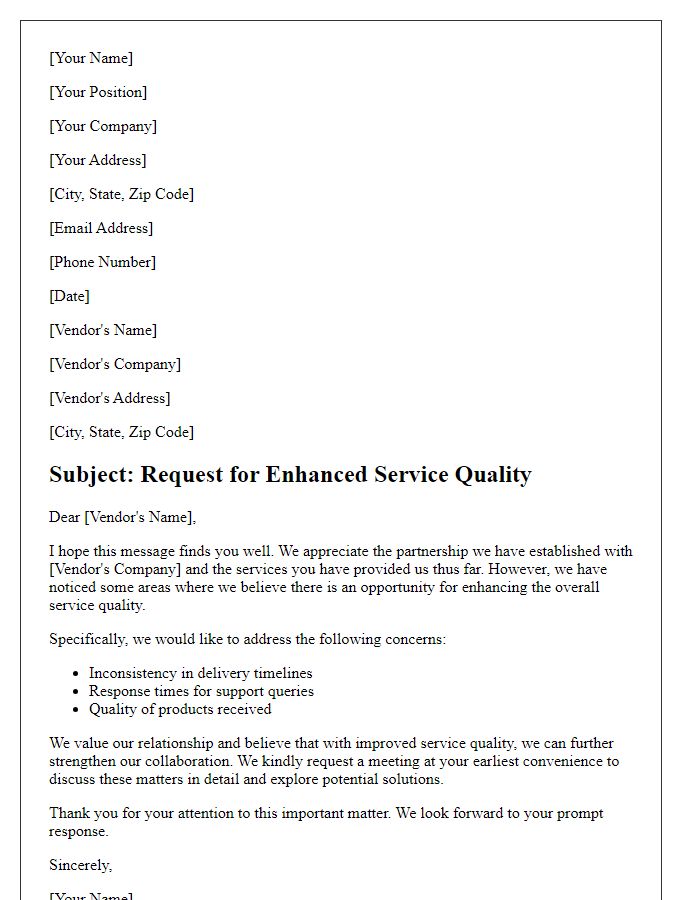
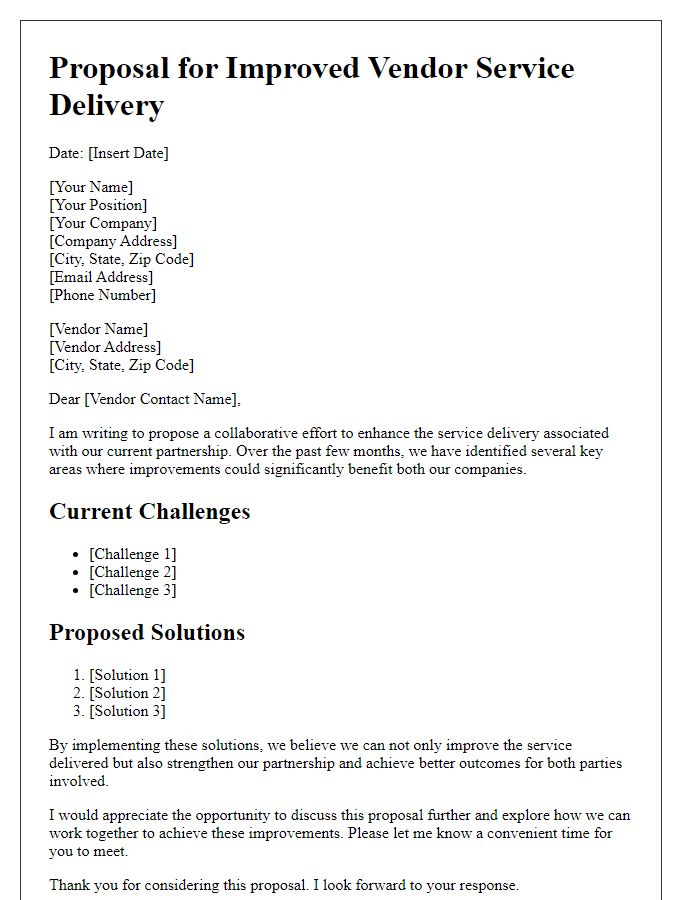
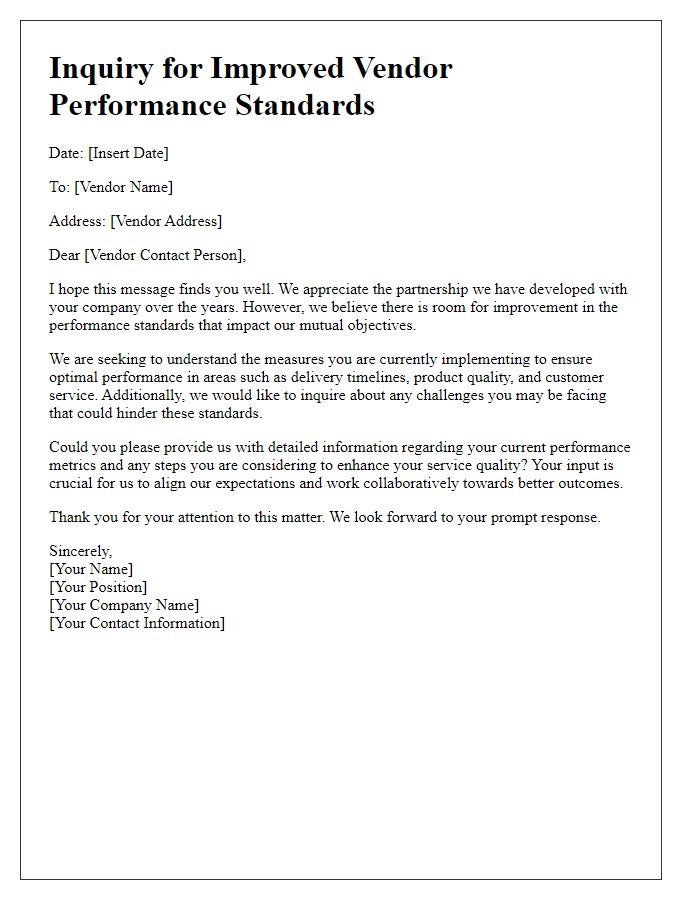
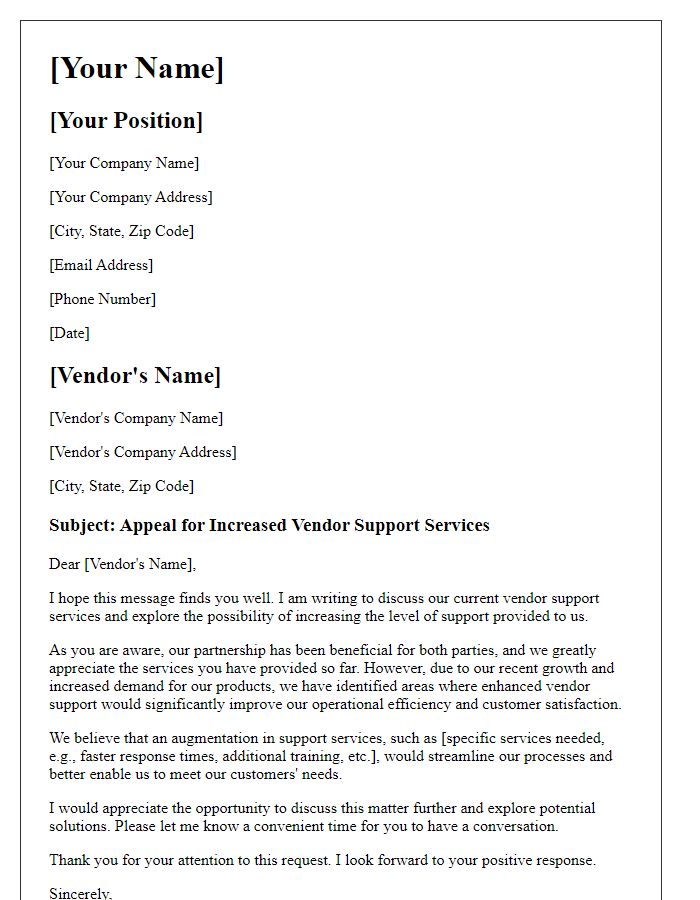
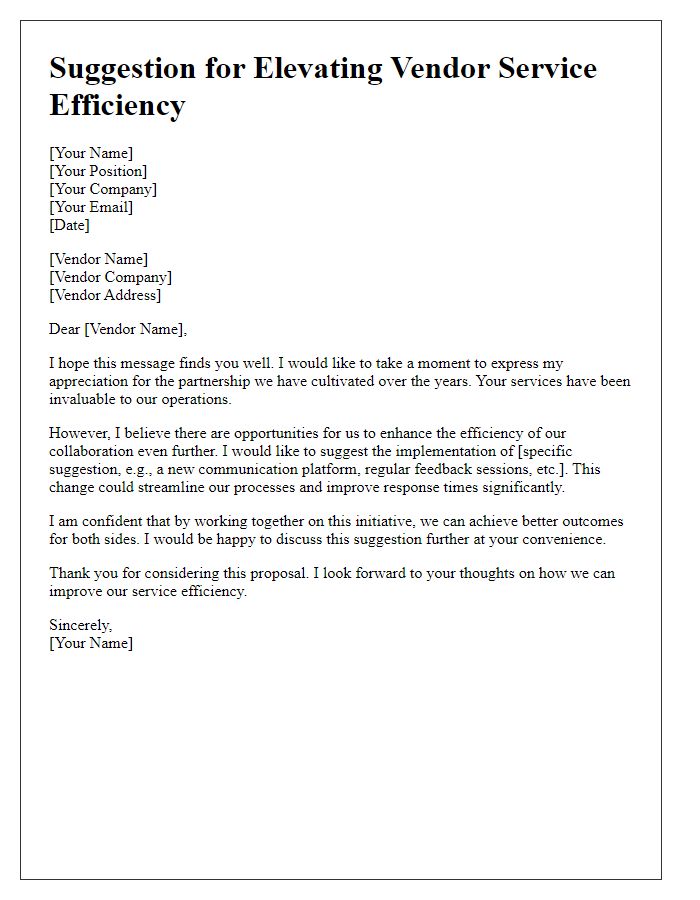
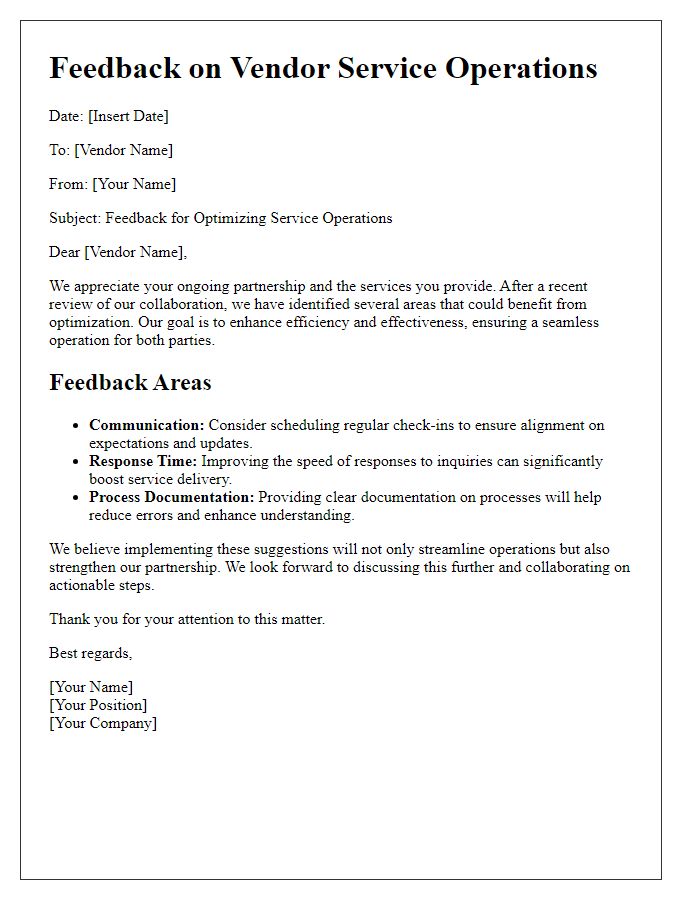
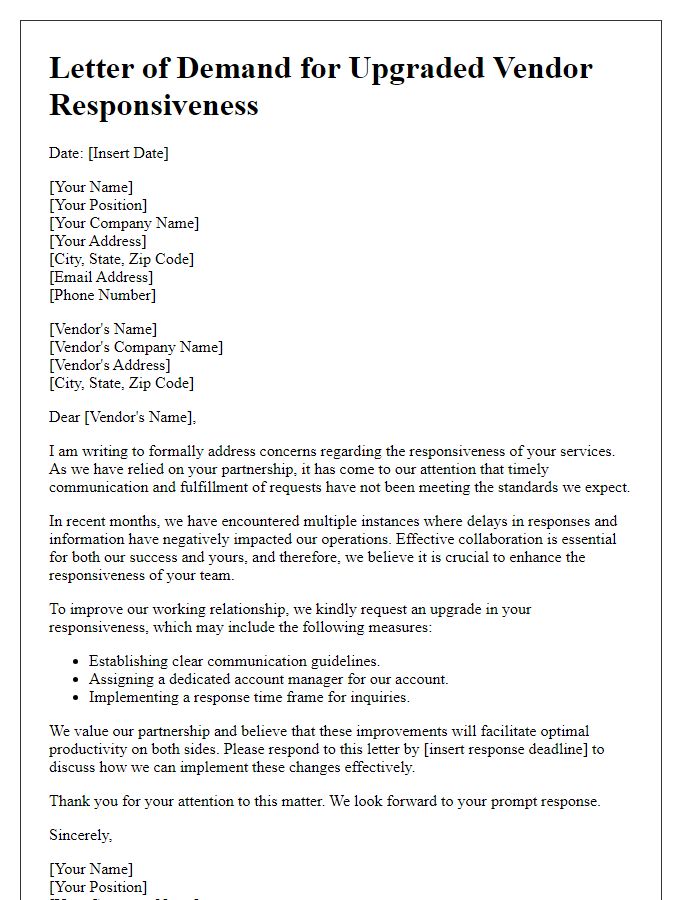

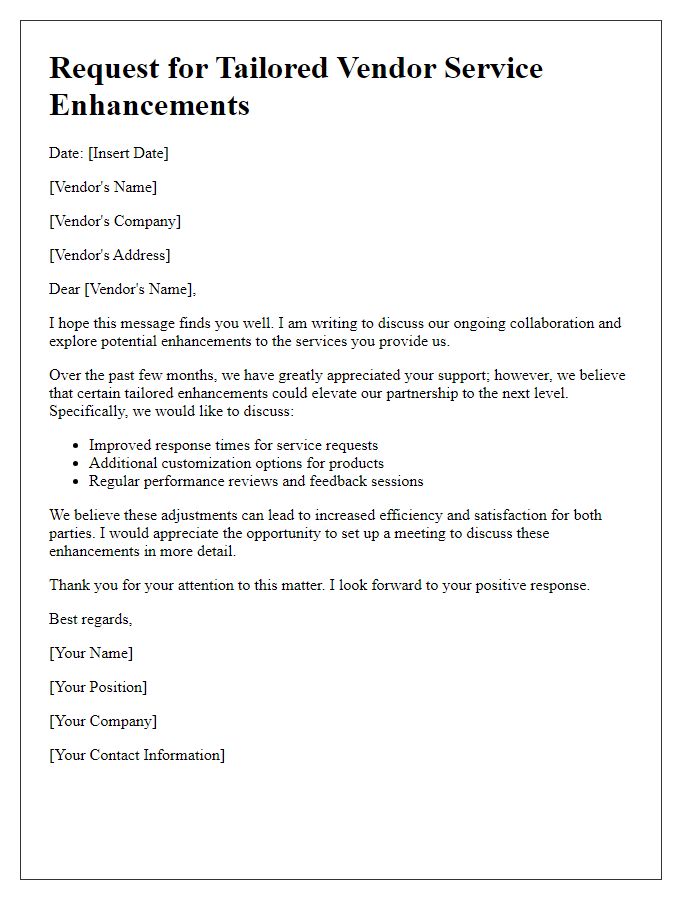
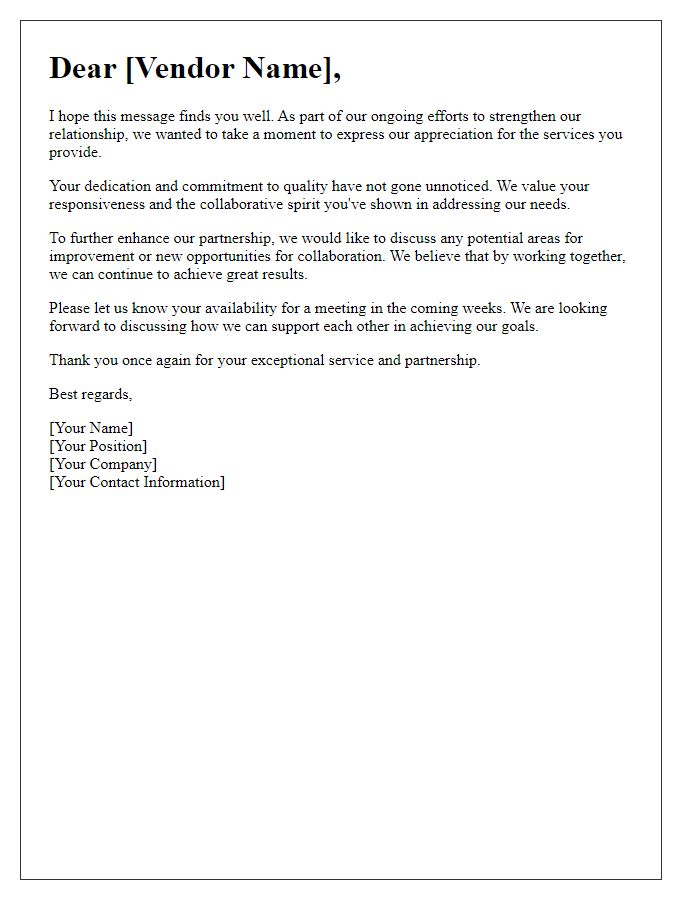


Comments